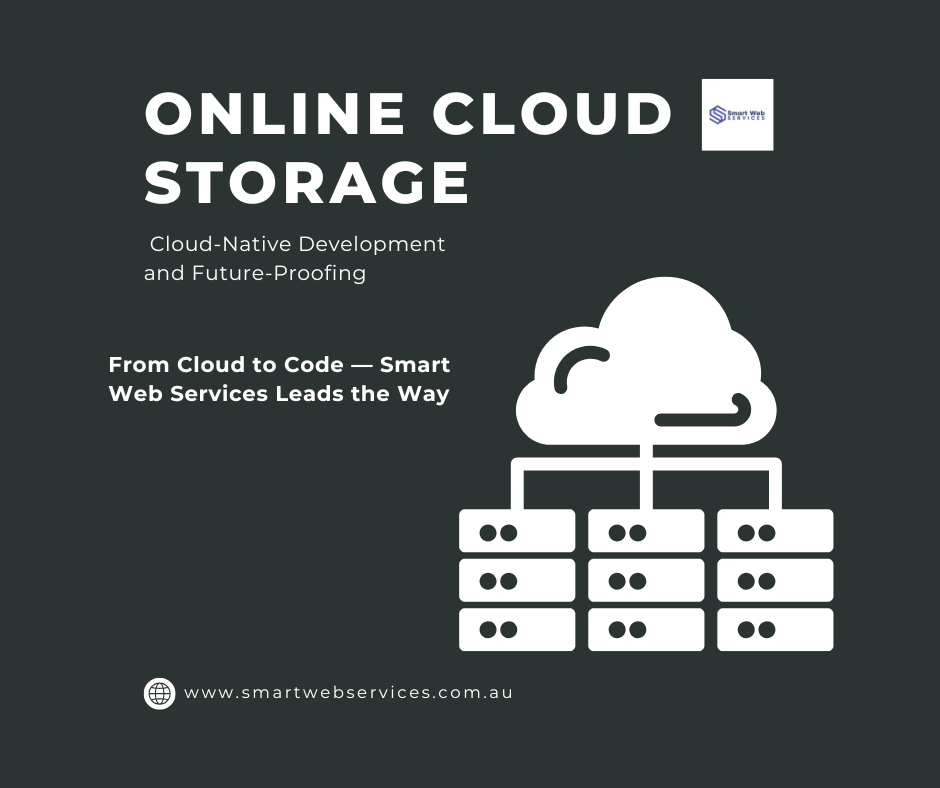In today’s fast-paced digital world, businesses are constantly searching for smarter, more scalable solutions to stay ahead of the competition. One trend that continues to dominate the tech landscape is cloud application development. In Australia, companies are rapidly embracing cloud technology to improve agility, reduce costs, and enhance digital transformation.
From startups in Sydney to large enterprises in Melbourne, the shift to the cloud is shaping the future of how applications are built, deployed, and managed. Here’s why cloud application development is becoming the cornerstone of Australia’s digital future.
1. The Rise of Cloud Adoption in Australia
Australia has seen explosive growth in cloud adoption over the past decade. According to recent industry reports, over 80% of Australian businesses now use cloud-based services for their daily operations. The Australian Government’s strong support for digital innovation and investments in cloud infrastructure—like Microsoft Azure’s Sydney data center and AWS’s Melbourne expansion—have paved the way for widespread cloud adoption.
Cloud technology allows businesses to move beyond traditional on-premise systems and embrace flexible, scalable platforms that adapt to their evolving needs. With this transformation, Australian enterprises can now deploy applications faster, reduce downtime, and reach customers across the globe with minimal infrastructure investment.

2. Scalability and Flexibility for Modern Businesses
One of the biggest advantages of cloud application development is scalability. Traditional IT infrastructure often limits growth due to hardware constraints and high maintenance costs. In contrast, cloud-based systems allow developers to scale applications seamlessly according to user demand.
For example, an eCommerce company in Brisbane can automatically scale up its cloud servers during peak shopping seasons like Christmas and scale down afterward, saving thousands of dollars in unnecessary expenses. This flexibility enables businesses of all sizes—from startups to enterprises—to innovate without financial strain.
3. Cost Efficiency and Pay-as-You-Go Models
Cloud computing has redefined cost efficiency in the software industry. Instead of investing in expensive physical servers or complex data centers, companies can now leverage pay-as-you-go pricing models offered by cloud service providers such as AWS, Google Cloud, and Microsoft Azure.
This model allows businesses to pay only for the resources they use, freeing up capital for other strategic investments. For small and medium-sized businesses (SMBs) in Australia, this means having access to enterprise-level technology without the enterprise-level costs.
4. Enhanced Security and Compliance Standards
Cybersecurity is a top concern for Australian businesses. With increasing cyber threats and data privacy regulations, cloud providers have stepped up their game by offering robust security frameworks that include encryption, firewalls, identity management, and compliance certifications.
For instance, AWS and Azure both comply with Australia’s Information Security Registered Assessors Program (IRAP), ensuring data is stored securely within national boundaries. This makes cloud-based applications not only secure but also fully compliant with Australian laws and standards.
5. Innovation Through Integration and Automation
Modern cloud platforms offer developers access to powerful tools such as AI (Artificial Intelligence), Machine Learning (ML), and DevOps automation. These capabilities make it easier to integrate intelligent features into applications—like predictive analytics, chatbots, or real-time data monitoring.
For example, a logistics company in Perth could use cloud-based AI tools to optimize delivery routes, while a healthcare provider in Adelaide could integrate real-time data analytics to improve patient care. The possibilities are endless, and innovation has never been more accessible.

6. Seamless Remote Collaboration and Development
With remote and hybrid work becoming the new normal, cloud development tools have revolutionized how teams collaborate. Cloud-based platforms like GitHub, Google Workspace, and Jira Cloud enable distributed teams to work on projects from anywhere while maintaining synchronization and version control.
For Australian tech startups with developers spread across multiple cities, this means smoother workflows, faster updates, and real-time communication—drastically improving productivity and project delivery timelines.
7. Sustainability and Green Technology
Australia’s growing focus on sustainability has also accelerated cloud adoption. Cloud data centers are far more energy-efficient than traditional on-site systems, as they consolidate workloads and optimize power consumption.
Companies like Google Cloud and Microsoft Azure are investing heavily in renewable energy to power their Australian operations. This shift toward green cloud technology aligns perfectly with Australia’s goal to achieve net-zero emissions by 2050, allowing businesses to grow sustainably while reducing their carbon footprint.
8. Competitive Advantage in the Global Market
Businesses that adopt cloud application development early gain a significant edge in the market. By leveraging faster deployment cycles, real-time analytics, and continuous integration, Australian companies can bring their products to market faster and respond quickly to customer feedback.
This agility translates directly into improved customer satisfaction and higher ROI. In a competitive digital economy, the ability to innovate faster often determines whether a business thrives or falls behind.
9. Cloud-Native Development and Future-Proofing
The future of software is cloud-native. Instead of simply migrating legacy systems, businesses are now building applications specifically designed to run in the cloud using microservices architecture and containerization (e.g., Docker, Kubernetes).
Cloud-native applications are more resilient, easier to update, and capable of handling massive workloads. This approach ensures that Australian businesses are future-proof, ready to embrace emerging technologies like edge computing and serverless architecture as they evolve.
10. The Road Ahead: Cloud as the Digital Backbone
The cloud has become the digital backbone of modern Australian enterprises. As 5G technology and edge computing continue to expand, cloud applications will only become faster, smarter, and more interconnected.
Businesses that embrace cloud application development today will be better positioned to leverage tomorrow’s innovations—from real-time IoT systems to advanced AI analytics—helping them stay ahead of competitors in a rapidly evolving digital economy.
Conclusion
The future of Australian business lies in the cloud. From flexibility and cost savings to innovation and security, cloud application development offers a strategic advantage that no organization can afford to ignore.
As companies continue to digitize and modernize, cloud technology will remain at the heart of their success—driving efficiency, creativity, and growth across every industry.
If your business is ready to make the shift to the cloud, now is the perfect time to invest in scalable, secure, and future-ready cloud application development services in Australia.



